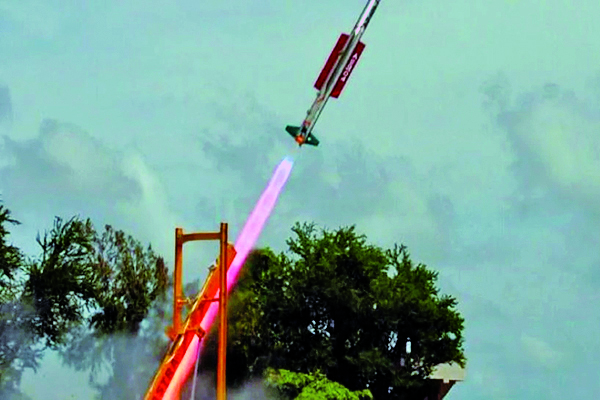The indigenously-developed ship-borne weapon system, Vertical Launch Short Range Surface to Air Missile (VL-SRSAM), was successfully flight tested by the DRDO and Indian Navy off the Chandipur coast in Odisha on 23 August.
The launch of the system was conducted against a high-speed aerial target mimicking an aircraft, which was successfully engaged. VL-SRSAM, jointly designed by three facilities of the DRDO for Indian Naval warships, is meant for neutralising various aerial threats at close ranges including sea-skimming targets.
“During the test launch, flight path and vehicle performance parameters were monitored using flight data, captured by various Range instruments such as Radar, Electro-optical tracking system (EOTS) and Telemetry systems deployed by ITR, Chandipur. The launch was monitored by senior scientists from various DRDO labs involved in the design and development of the system such as Defence Research & Development Laboratory (DRDL), Research Centre Imarat (RCI), Hyderabad and R&D Engineers, Pune,” said the Ministry of Defence in a statement.
The VL-SRSAM system has been designed to strike high-speed airborne targets at the range of 40 to 50 km and at an altitude of around 15 km. DRDO officials have said its design is based on the Astra missile, which is a Beyond Visual Range Air to Air missile.
Two key features of the VL-SRSAM are cruciform wings and thrust vectoring. The cruciform wings are four small wings arranged like a cross on four sides and give the projective a stable aerodynamic posture. The thrust vectoring is an ability to change the direction of the thrust from its engine control the angular velocity and the attitude of the missile, an official said.
VL-SRSAM is a canisterised system, which means it is stored and operated from specially designed compartments. In the canister, the inside environment is controlled thus making its transport and storage easier and improving the shelf life of weapons.


















